Original title: Scaling Ethereum L1 and L2s in 2025 and beyond
Original author: Vitalik
Original translation: Odaily Planet Daily Husband How
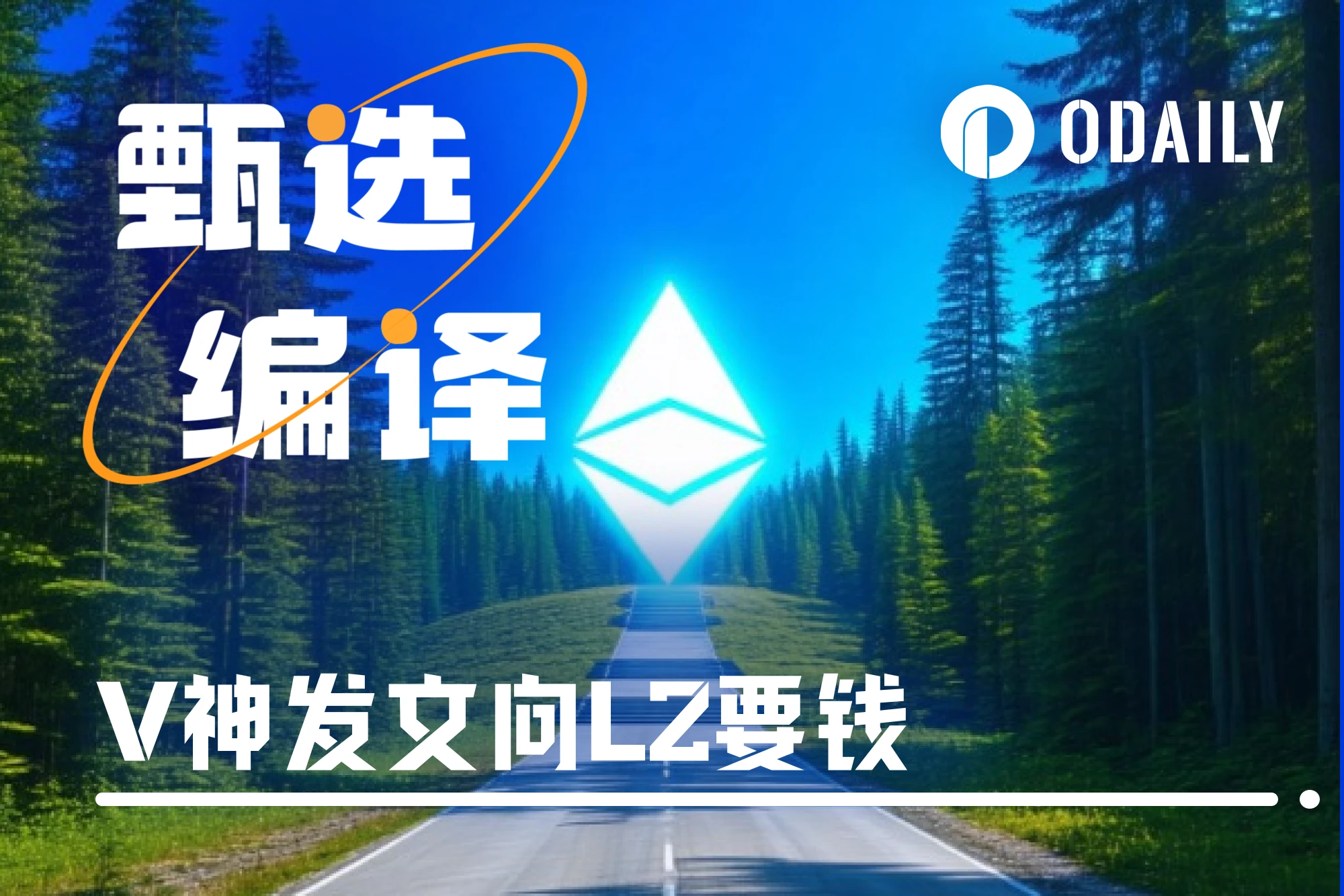
Ethereums goal has not changed since day one: to build a global, censorship-resistant, permissionless blockchain platform. A free and open platform for decentralized applications, based on the same principles (now called the reborn and cypherpunk spirit) as GNU + Linux, Mozilla, Tor, Wikipedia, and many great FOSS projects.
Over the past decade, Ethereum has also developed a feature that I really appreciate: in addition to innovations in cryptography and economics, Ethereum is also an innovation in social technology. The Ethereum ecosystem as a whole demonstrates a more open and decentralized way of collaboration. Political philosopher Ahmed Gatnash described his experience when he attended Devcon:
…It gave me a glimpse into what an alternative world might look like — a world with few barriers to entry and no ties to traditional systems. A world where the standard status system is turned on its head, and the people who enjoy the highest social status are geeks who focus on independently solving problems they really care deeply about, rather than people who play games to climb the ladder of traditional institutions and accumulate power. A world where almost all power is soft power. I find this beautiful and very inspiring — it gives a sense that in such a world, anything is possible, and that such a world is actually within reach.
Technical projects and social projects are inherently intertwined. If you have a decentralized technical system at time T, but it is maintained by a centralized social process, there is no guarantee that your technical system will still be decentralized at time T+1. Similarly, social processes are maintained by technology in many ways: technology attracts users, the ecosystem brought by technology provides developers with incentives to stay, technology keeps the community down to earth and focused on building rather than just socializing, and so on.
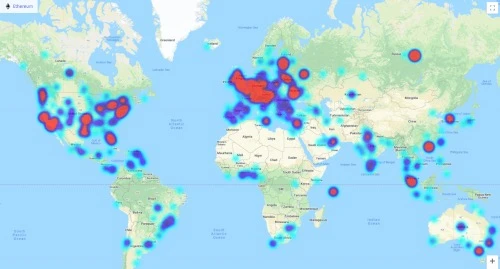
After a decade of hard work, under the joint governance of technical and social attributes, Ethereum has demonstrated another important quality: Ethereum can provide practical services to people at scale. Millions of people use ETH or stablecoins as a way to save, and even more people use these assets for payments: myself one of them. Ethereum has efficient and practical privacy tools, which I use to pay for VPN fees to protect my internet data. It also has ENS, a robust decentralized alternative for DNS and broader public key infrastructure. In addition, there are easy-to-use decentralized Twitter alternatives on Ethereum, as well as DeFi tools that provide millions of people with assets that have higher returns and lower risks than traditional finance.
Five years ago, I was reluctant to talk about the latter use cases, mainly because the infrastructure and code were not mature yet. We had just experienced the large and painful smart contract hacks of 2016-2017, and a 7% annualized return was meaningless compared to a 5% annualized return if there was a 5% chance of losing 100% of the returns every year. In addition, transaction fees were too high to achieve large-scale adoption of these tools. Today, these tools have proven their resilience over time, the quality of audit tools has improved, and we are increasingly confident in their security. We know what not to do. L2 scaling technology is working, and transaction fees have remained very low for nearly a year.
We need to continue to enhance Ethereum’s technical and social attributes and its utility. Without the former, we will become an increasingly ineffective “decentralized” community that only protests the “unethical and wrongdoings” of mainstream institutions without truly offering better alternatives. Without the latter, we will be no different from the “greed is good” mentality of Wall Street, which many people joined the Ethereum community in the first place to escape.
This duality of technology and utility has many far-reaching consequences. In this post, I want to focus on one specific aspect that will be critical to Ethereum users in the short and medium term: Ethereum’s scaling strategy.
The Rise of Layer 2
Today, our path to scaling Ethereum is through Layer 2 protocols. The Layer 2s of 2025 are already a huge leap from the early experiments of 2019: they have achieved key decentralization milestones, are protecting billions of dollars in assets, and have increased Ethereum’s transaction capacity by 17x while reducing fees by the same amount.
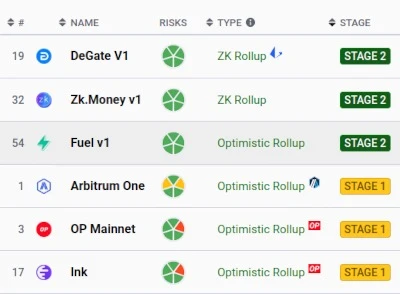
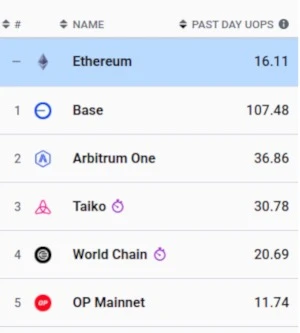
All of this has happened just in time for a wave of successful applications: various DeFi platforms, social networks, prediction markets, and newfangled projects like Worldchain (which now has 10 million users). In addition, the “enterprise blockchain” movement, which was thought to have reached a dead end in the 2010s due to the failure of consortium chains, has also been revived with the rise of Layer 2, with Soneium being a prominent example.
These successes also demonstrate the social advantages of Ethereum’s decentralized and modular approach to scaling : the Ethereum Foundation does not need to find all users on its own, but dozens of independent entities are driving it. These entities have also made crucial contributions to the technology, and without them, Ethereum would not be able to achieve what it has today. Because of this, we are finally approaching “escape velocity”.
Challenges: Scaling and handling heterogeneity
Currently, Layer 2 faces two major challenges:
Capacity expansion: The current Blob space is barely enough to support the existing Layer 2 and its application scenarios, but it is far from enough to meet future needs.
Heterogeneity problem: Ethereums original expansion vision was to create a blockchain consisting of multiple shards, each of which is a copy of the EVM and is processed by a small number of nodes. In theory, Layer 2 is the realization of this vision. However, in practice there is a key difference: each shard (or a group of shards) is created by different participants, is treated as a different chain in the infrastructure, and usually follows different standards. This situation brings problems for developers and users in terms of composability and user experience.
The first problem is a well-understood technical challenge with a simple solution but difficult implementation: provide more Blob space for Ethereum. In addition, Ethereum L1 can also alleviate the pressure in the short term through moderate expansion, as well as improvements in Proof of Stake, Stateless and Light Verification, storage, EVM and encryption technology.
The second problem is a coordination problem, and one that has received a lot of public attention. The Ethereum ecosystem is no stranger to working across teams to accomplish complex technical tasks — after all, we did The Merge. However, the coordination problem here is more challenging because there are more participants, the goals are more diverse, and the process started later. Even so, our ecosystem has solved many difficult problems in the past, and can do it again this time.
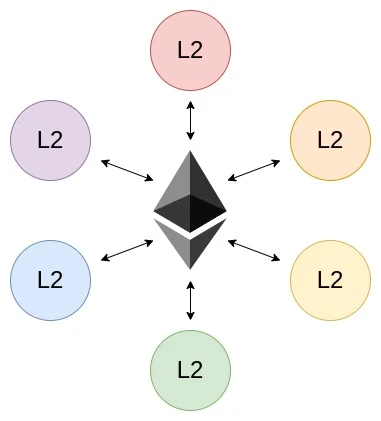
A possible shortcut to scaling is to abandon Layer 2 and implement much higher gas limits directly through Layer 1 (whether through multiple shards or a single shard). However, this approach would sacrifice too much of the advantages of Ethereums current social structure, which is extremely effective in integrating different forms of research, development, and ecosystem building culture. Therefore, we should stick to the existing route and continue to scale primarily through Layer 2, while ensuring that Layer 2 truly delivers on its promise.
This means the following:
Layer 1 needs to accelerate the expansion of Blob capacity.
Layer 1 also needs to moderately scale the EVM and increase the gas limit to cope with activities that Layer 1 will still carry out even in a Layer 2-dominated environment (for example, zero-knowledge proofs, large-scale DeFi, deposit and withdrawal operations, special large-scale exit scenarios, key storage wallets, asset issuance, etc.).
Layer 2 needs to continue to improve security. Layer 2 should provide the same security guarantees as sharding (including censorship resistance, light client verifiability, no embedded trusted parties, etc.).
Layer 2 and wallets need to accelerate improvements and standardize interoperability . This includes chain-specific addresses, messaging and cross-chain bridge standards, efficient cross-chain payments, on-chain configuration, etc. Using Ethereum should be like using a single ecosystem, not 34 different blockchains.
Layer 2 deposit and withdrawal times need to be significantly shortened.
As long as basic interoperability requirements are met, Layer 2 heterogeneity is beneficial. Some Layer 2s will be based on minimally governed Rollups, running an exact copy of the Layer 1 EVM; some Layer 2s will try different virtual machines; others will be more server-like, using Ethereum to provide additional security for users. We need a variety of Layer 2s covering this spectrum.
We need to explicitly think about the economics of ETH, ensure that ETH can continue to accrue value even in a Layer 2-dominated world, and provide solutions for multiple value accrual models.
Next, we will discuss each topic in detail.
Scaling: Blobs, Blobs, and More Blobs
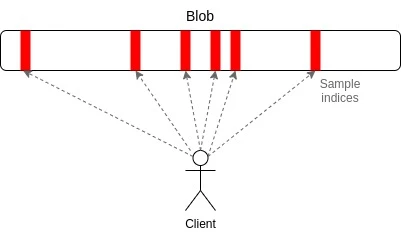
In EIP-4844, there are 3 blobs per slot, with a data bandwidth of 384 kB per slot. A simple estimate shows that this is equivalent to 32 kB per second, and each transaction takes up about 150 bytes on the chain, so we can support about 210 transactions per second (TPS). According to L 2b eat data, this estimate is almost exactly consistent with the data.
Pectra, scheduled for release in March, will double the number of blobs to 6 blobs per slot.
Fusaka is currently focusing on PeerDAS, and plans to prioritize the implementation of PeerDAS and EOF. PeerDAS may increase the number of blobs by 2-3 times.
The next goal is to continue to increase the number of blobs. When 2D sampling is achieved, the number of blobs can be increased to 128 per time slot, and it can be further increased in the future. Combined with improvements in data compression, the on-chain TPS can reach 100,000.
The above is a restatement of the established roadmap to 2025. The key question is: How can we accelerate this progress? Here are my answers:
More explicitly deprioritize non-blob functionality.
Make it clearer that the Blob is the goal and make related peer-to-peer RD a priority for talent recruitment.
Let stakers adjust the Blob target directly, similar to the Gas limit. This will allow the Blob target to increase more quickly as technology improves without waiting for a hard fork.
It is possible to consider a more radical approach to increase the number of blobs faster by introducing more trust assumptions for low-resource stakers, but we need to be cautious about this.
Improving Security: Proof Systems and Local Rollups
Currently, there are three Phase 1 Rollups (Optimism, Arbitrum, Ink) and three Phase 2 Rollups (DeGate, zk.money, Fuel). However, most activity still occurs on Phase 0 Rollups (i.e. multi-signature schemes). This needs to change. One big reason for the slow pace of change is that it is very difficult to build a reliable proof system and build enough confidence to rely entirely on its security (give up the training wheels).
To achieve this goal, there are two paths:
Phase 2 + Multiple Proof Systems + Formal Verification: Achieve redundancy through multiple proof systems and leverage formal verification (such as the “Verified ZK-EVM Project”) to increase security confidence.
Local Rollup:
Integrate verification of EVM state transition functions into the protocol itself, for example via precompiled contracts.
At this stage, both paths need to be advanced in parallel. For Phase 2 + Multi-Proof System + Formal Verification, the roadmap is relatively clear. Development can be accelerated by strengthening cooperation in the software stack, which not only reduces duplication of work, but also improves interoperability as a byproduct.
For local Rollup, it is still in the early stages , and more thinking is needed on how to make precompiled contracts as flexible as possible. An ideal goal is to support not only full clones of the EVM, but also EVMs with arbitrary changes, allowing modified EVM Rollups to still use the precompiled contracts of local Rollup and only introduce custom provers for their modified parts. This may involve the adaptation of precompiled contracts, opcodes, state trees, and other components.
Interoperability and standardization
The goal is to make the transfer of assets and the use of applications between different L2s as smooth as the interaction between different shards in the same blockchain. At present, there is a relatively clear roadmap in this regard:
Chain-specific address: The address should include the account information on the chain as well as the identifier of the chain itself. For example, ERC-3770 is an early attempt, and there are more complex designs that even migrate the L2 registry to Ethereum L1.
Standardize cross-chain bridges and messaging : There should be standardized ways to verify proofs and pass messages between L2s, and these standards should not rely on trust mechanisms such as multi-signature bridges. An ecosystem that relies on multi-signature bridges is unacceptable. If this trust assumption did not exist in the sharding design in 2016, it is unacceptable today.
Faster deposit and withdrawal times: “Local” message times should be reduced from weeks to minutes (ultimately with the goal of one block time). This requires faster ZK-EVM provers and support for proof aggregation technology.
Synchronously read L1 data from L2: for example L1S LOAD and REMOTESTATICCALL, these functions will greatly simplify interoperability across L2 and facilitate the functionality of keystore wallets.
Shared sorting and other long-term work: Part of the value of Rollup-based designs is that they can implement features like shared sorting more efficiently.
Under the premise of meeting these standards, L2 can vary in terms of security, performance, and design models according to requirements. For example, different virtual machines, sorting models, and trade-offs between scale and security can be explored. However, the security level of each L2 must be clear to users and developers.
In order to move faster, cross-domain organizations within the ecosystem can take on a larger share of the work, such as the Ethereum Foundation, client development teams, and mainstream application development teams. This will reduce coordination costs and make it easier to adopt standards because the development workload of each L2 and wallet will be reduced. However, as an extension of the Ethereum ecosystem, L2 and wallets also need to strengthen the development of the last mile to ensure that these features are truly implemented in the hands of users.
The Economics of ETH
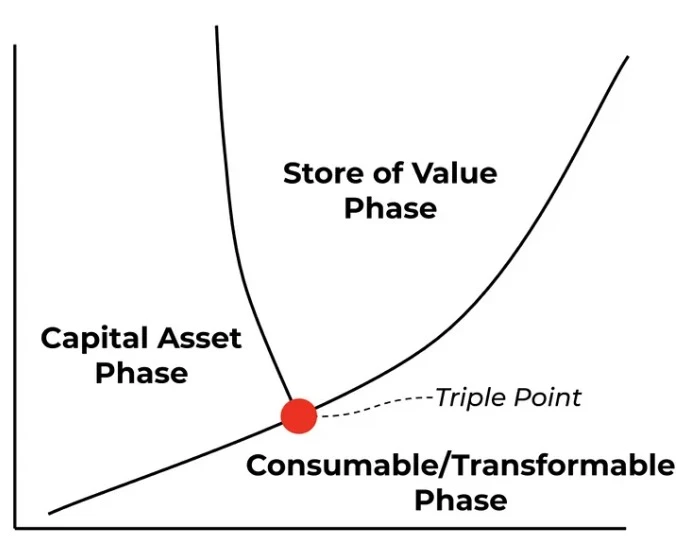
We should adopt a multi-pronged strategy to cover all major possible sources of value for ETH as a three-point asset. The key components of this strategy may include the following:
Broad consensus is reached to consolidate ETH as the primary asset of the larger (L1 + L2) Ethereum economic system, supporting applications that use ETH as primary collateral, etc.
Encourage L2 to support ETH and allocate a portion of the fees. This can be done by burning a portion of the fees, permanently staking the fees and donating the proceeds to Ethereum ecosystem public goods, or a variety of other ways.
Rollup-based designs are supported, in part as a path for L1 to obtain value through MEV , but all Rollups should not be forced to be based on this design, as it is not suitable for all applications, and it cannot be assumed that this approach alone can solve all problems.
Increase the number of blobs, consider setting a minimum blob price, and include blobs as another possible source of revenue. For example, if the average blob fee over the past 30 days remains constant (due to demand) and the number of blobs increases to 128, Ethereum will destroy 713,000 ETH per year. However, the demand curve is not necessarily so favorable, so this alone cannot solve the problem.
Conclusion: The Road Ahead
Ethereum has matured in both its technology stack and social ecosystem, leading us toward a more free and open future where hundreds of millions of people will be able to benefit from crypto assets and decentralized applications. However, there is still a lot of work to be done, and now is the time to redouble our efforts.
If you are an L2 developer, participate in the development of tools to make Blobs scale more safely, develop code to extend EVM execution, and implement features and standards that make L2 interoperable.
If you are a wallet developer, you also need to contribute and implement standards so that the ecosystem can ensure a seamless user experience while maintaining the same security and decentralization features as Ethereum L1.
If you are an ETH holder or community member, actively participate in these discussions; there are many areas that require deep thought and brainstorming. The future of Ethereum depends on the active participation of each of us.










